Last updated: November 28, 2022
Article
Scientist Profile: Katy Delaney, Wildlife Ecologist
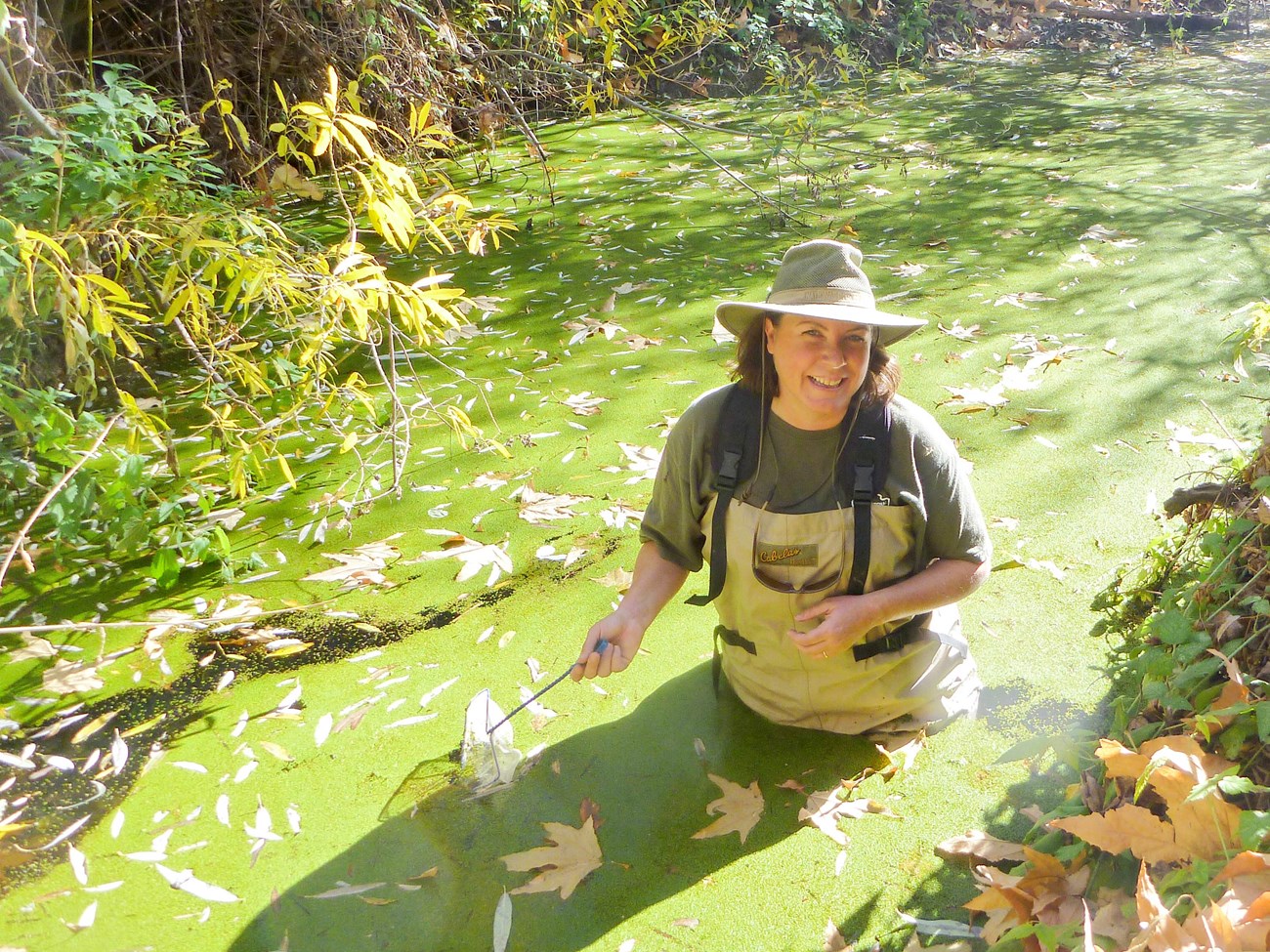
NPS
"You work really, really hard. And what you get is the satisfaction of doing conservation in an area that you love. And doing work that you love.”
Who/what inspired you to pursue a career in science?
“I used to watch the Jacques Cousteau documentaries with my dad in the 70s when they would show on PBS. I lived in Michigan, so I hadn't even really experienced the ocean very many times. And I didn't actually know that he was a scientist, but I knew that it was just a cool thing to be doing, going out on expeditions and studying weird and interesting things in the ocean.
I was kind of all over the place in high school. I was not a good student. But the subject that I did the best in was biology. Then when I went to community college, I was really interested in marine biology, maybe because of my experience with the Jacques Cousteau documentaries. The college had a set of marine biology classes and labs. And I would say my lab partner in one of those classes was also an inspiration to me. She kind of kicked my butt and made me study and I learned a lot.”
What education and experience led you to your current position?
“I got really, really interested in marine biology and actually that's what I was going to try to do for undergrad. But I ultimately decided to go to UCSD as a general biology major. I figured, well maybe I'll go to grad school and start doing marine biology but that didn't happen either. I got sidelined a little bit with my first field job and being really interested in animal behavior and getting into birds. I think that's kind of common, to take a windy path.
There were a couple of professors there that were teaching upper division classes on animal behavior and behavioral ecology. And they mentioned studying a bird called the greater sage grouse in a place that I had spent time with my family. And so I remember talking to them about these sage grouse gathering spots called leks, and I was like, Where? Where do you see these? So they kind of inspired me to think about going into the field, not into the ocean.
When I wanted to go to grad school, I knew I needed field experience. I was able to secure an internship with a professor at Berkeley studying acorn woodpecker behavior. I would go and sit in front of these acorn woodpecker holes in the blind, with my scope focused right on their nest for hours, watching and recording data about what they were doing. And you know, that's what you end up doing as an intern. You're sort of collecting this tedious data, but it was very interesting to me.
And then I was accepted at UCLA as a grad student to work with sage grouse. When my advisor left the university three years later, I had to switch projects, and so I switched to Bob Wayne's lab. He studied mostly carnivore and canid genetics. But I didn't want to work with canids. I wanted to do something with birds, so I worked on island and western scrub-jays for the rest of my dissertation. I did some phylogenetics, phylogeography, some behavioral ecology. I did nest observations, I took feathers, and I measured color and looked at differences between the species and also differences between individuals.
"When I was hired as the ecologist at the park, I switched gears from field work with birds to field work with herps. And it was a fairly natural transition. If you're somebody who's interested in wildlife ecology in general, you're going find everything interesting. And so that's how I felt.”
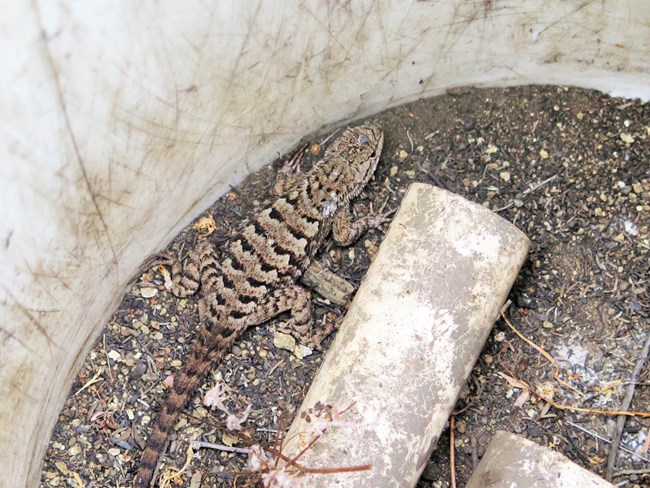
NPS
After I graduated, I stayed on at UCLA and did a postdoc project with Seth Riley, my current supervisor at the National Park Service. He was really interested in getting someone to work with him to look at fine scale genetic changes across the Santa Monica Mountains [National Recreation Area] in multiple species. He had all these samples from the park’s pitfall trapping project, from catching lizards across the landscape. And I spent a lot of time getting samples from birds in the area too. We did this fine scale genetic study and finally got that published in 2010. And so there was a collaboration going on there that we just continued.
Later, when I was hired as the ecologist at the park, I switched gears from field work with birds to field work with herps [reptiles and amphibians]. And it was a fairly natural transition. If you're somebody who's interested in wildlife ecology in general, you're going find everything interesting. And so that's how I felt.”
What’s your job like?
“It's kind of crazy day to day. It's taken me a while to get used to because there's so many different things. I supervise two full time intern positions and a biotech position. There's quite a lot of supervision and training that goes on there during certain times of the year.
I also still do a lot of field work. The California red-legged frog reintroduction project means that I'm out in the field starting in February looking for frogs and egg masses to transfer, or surveying the places where we're going to put them. That involves a lot of wading through streams and hiking off trail. We've done that every year since 2014.
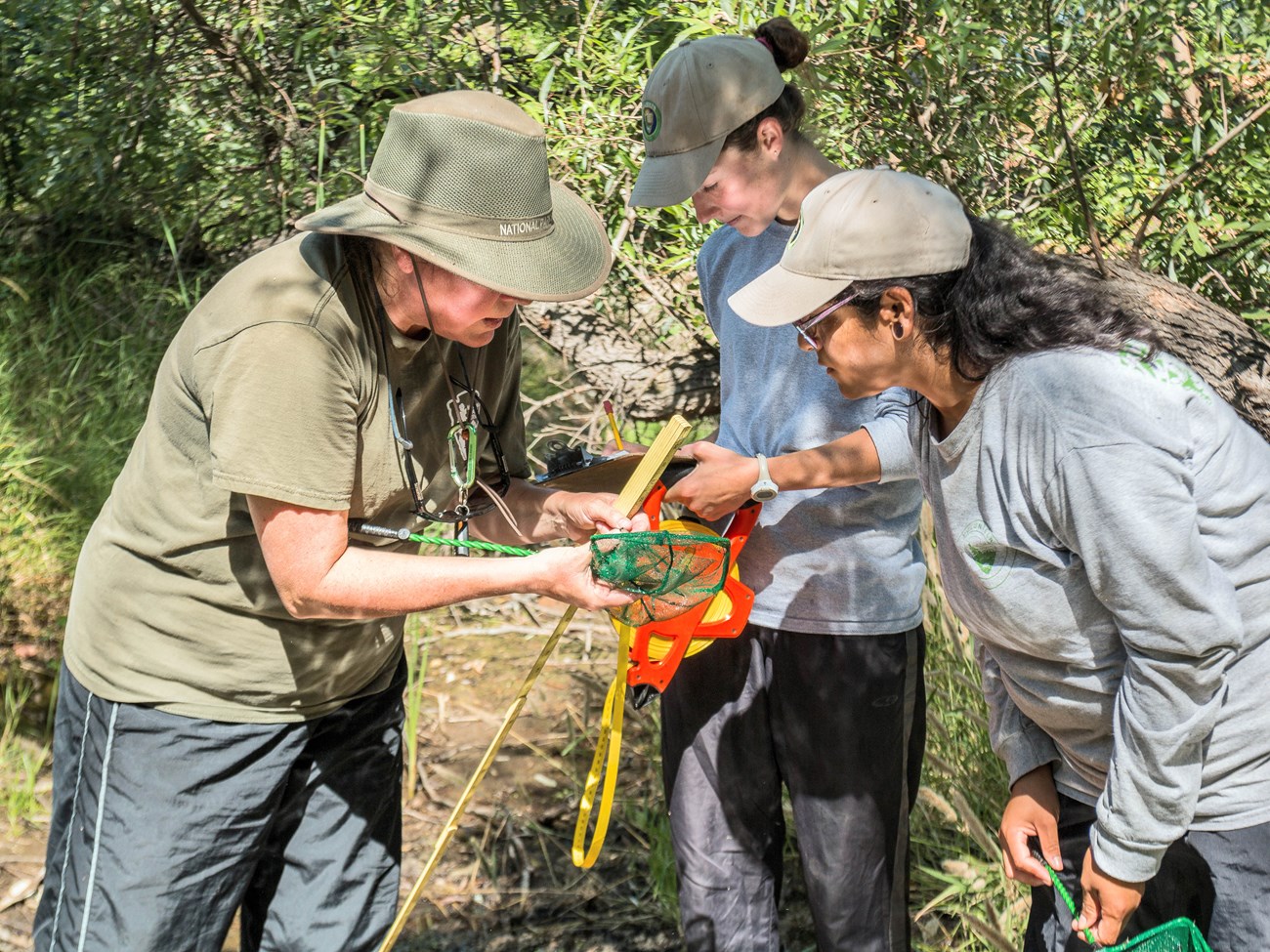
NPS / Connar L'Ecuyer
And then during the springtime, I have other fieldwork where I do stream surveys. What we're mostly doing is just counting tadpoles and looking for evidence of amphibian breeding. It's part of a [Mediterranean Coast Inventory & Monitoring Network] long-term monitoring project to gather data so that we can inform park management if we start seeing things declining, like some of our amphibians declining during the drought.
So part of what I do is also looking at our data and making sure it's correct. There's quite a lot of data management and data crunching that goes on, and then writing annual reports and papers.
It's weird, this coronavirus pandemic and the fact that we're at home and not going to be able to do red-legged frog reintroduction this year. I think it's going to give me an opportunity to go back and look at some of our 20 year data sets and hopefully get some interesting analyses done.”
What do you love the most? What have been your biggest challenges?
“I love being able to go out by myself and walk in these places where there aren't trails and there aren't people and there're just these beautiful canyons where I can look for California red-legged frogs and see how the reintroduction is working.
It's a really big transition, though, to go from academia to the government. I have a hard time with authority. And following some of the rules. So I struggle with that a little bit.
I also struggle with being an intern mentor. I take it really seriously. I hope that I can help them as much as they're helping me because they're collecting all this great data and not getting paid and, and it's hard work. I try to really give back to them as much as I can. But it's not a natural role for me to be someone's supervisor.”
Is there a project that you’re especially proud to be a part of?
"And it worked just every step of the way. You have eggs hatching in pens, and you're like, ‘Whoa, they actually didn't die!’"
“I guess I'd have to say the red-legged frog reintroduction. If you're like, ‘I want to do conservation’, that project is like the stereotypical thing. You're gonna reintroduce an endangered species from one place where they exist to these other places where they used to exist but don't anymore.
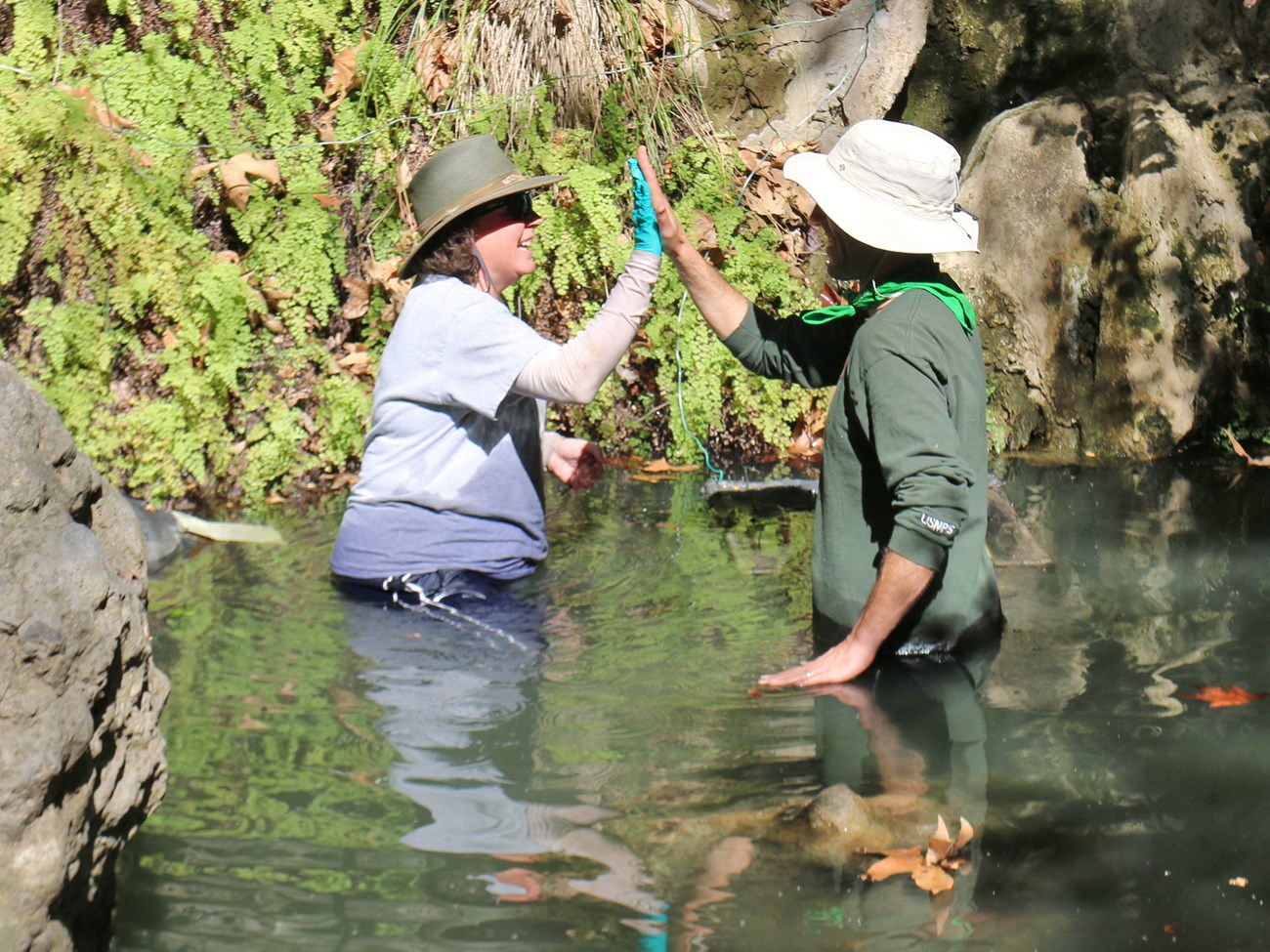
NPS
Every single time there was a little success in the project, it was a surprise to me, obviously a pleasant surprise. It wasn't like I expected it to fail, but there used to be frogs here and we don't know why they're not here now. So it's always been sort of a leap of faith.
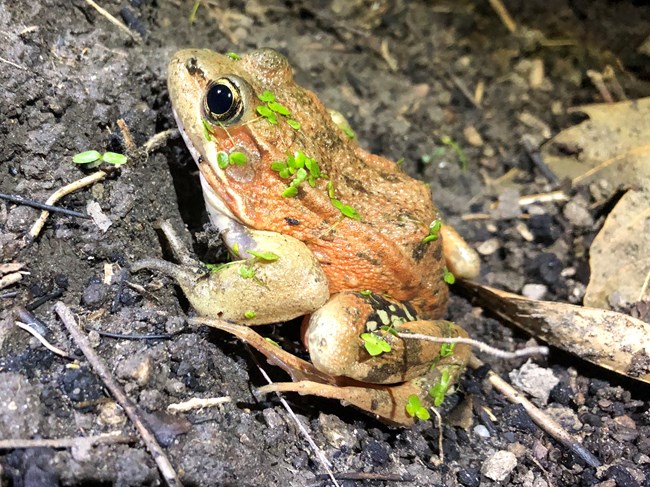
NPS
And it worked just every step of the way. You have eggs hatching in pens, and you're like, ‘Whoa, they actually didn't die!’ We had tadpoles that we released from the pens that would grow up after three years to be adults, and they were breeding on their own. It's been really really satisfying because it seemed like they were on their way to being established in the Santa Monica Mountains again.
Then we had this crazy, terrible fire, the Woolsey Fire, in November of 2018. It burned all of our sites. But the frogs have hung on. They haven't bred so far except at one of the sites because the habitat is really poor. We just hope that the streams can recover and that the frogs can live long enough to find some habitat. Those frogs can surprise me with how resilient they are.”
What is the most surprising thing about a species that you study?
“Everybody is always completely baffled, and I was too when I first heard that California newts could live like 20 years. They're these tiny things. But I think California newts are the coolest. Most of them come to the stream and breed for a few short weeks in March and April, and then they leave and they're mostly terrestrial. No one has any idea what they're doing on land or how far they go. Add to that the fact that they're completely toxic. They have a toxin on their skin, which is the same toxin that is in blowfish. And you know that if you eat blowfish, it'll kill you. If you lick a newt it'll totally kill you. And it's this animal that's just walking around in LA. It's crazy.
California newts are one of the native species that we've been monitoring for our long-term monitoring project for stream breeding amphibians. And what we found over the years, since 2000, is that California newts are a species that is sensitive to urbanization. If you have just 10% of urbanization upstream in your watershed, you will not find newts anymore. You know, water runs downhill. And you can imagine what washes off the roads and lawns and into the streams. So newts are sort of an indicator of stream condition. California treefrogs and California red-legged frogs are in that same category.
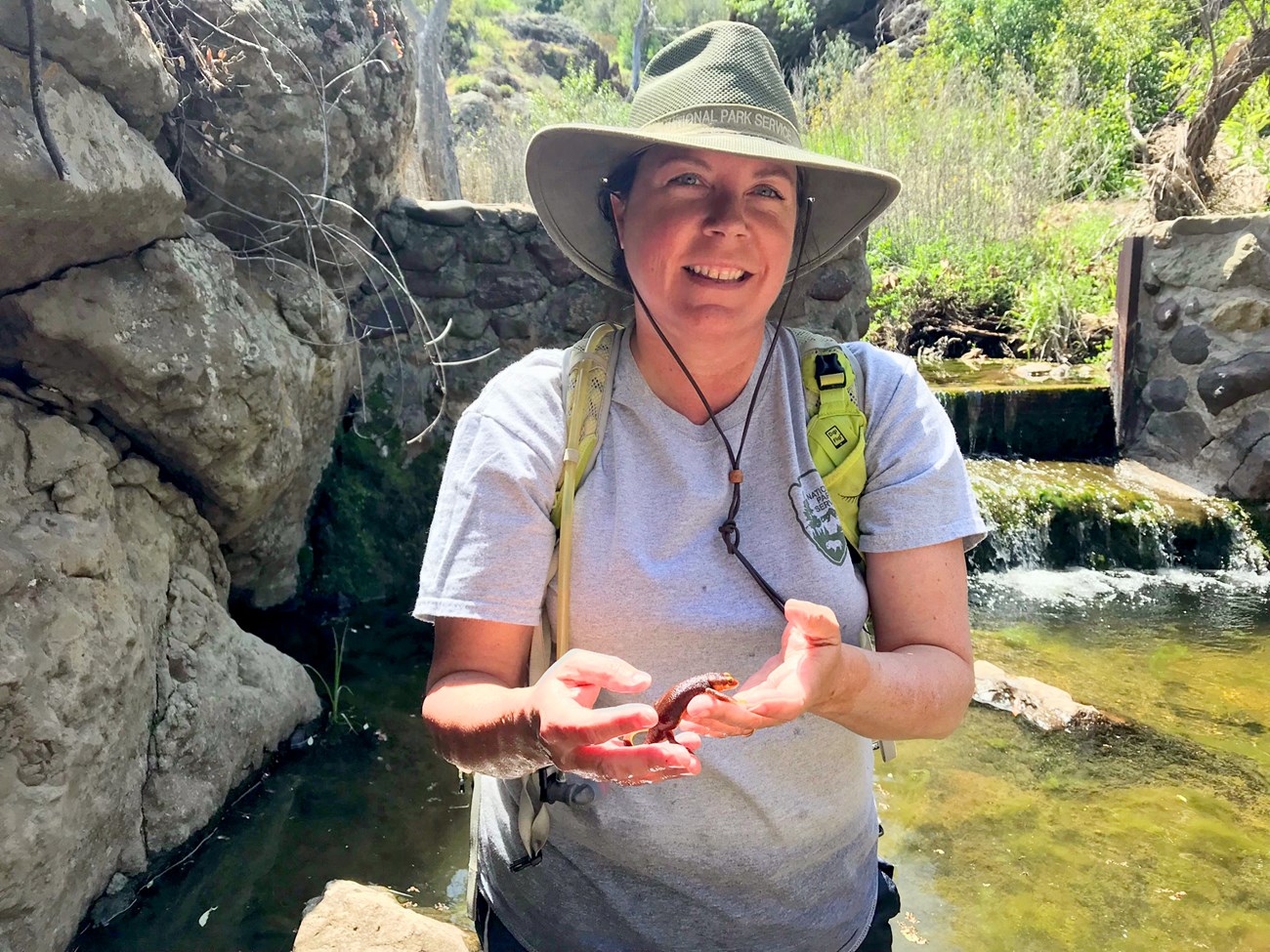
NPS
You can't get rid of development once it's there. So what we do is we try to get our results out there so that people will be interested in maybe preserving places in sensitive watersheds that are important. That's the hope anyway.”
Is there a species that you have a particular affinity for?
"With island scrub-jays if you put peanuts in a box, the same scrub jay will come and trigger your trap every five minutes, or every two minutes. It's ridiculous."
“Island scrub-jays are right up there with red-legged frogs. So I would say those are my two favorites. Island scrub-jays are interesting because they exhibit that sort of island tameness. They were way too easy to catch when I was doing my dissertation work. For western scrub-jays on the mainland you put peanuts in a box and then you come back later and you just catch whoever you catch in the box trap. With island scrub-jays if you put peanuts in a box, the same scrub-jay will come and trigger your trap every five minutes, or every two minutes. It's ridiculous. They would come into the field house and they take stuff out of the trash. They're very charismatic and they're beautiful. They're bigger and they're bluer. They’ve got personality. So, yeah, I'm biased. I love them.”
Do you have any memorable fieldwork stories?
“It's pretty hilarious to go out with my interns. I tell them that we're going to go do a stream survey and we're going to have to swim. And they don't really know what that means because swimming is like in a pool or in the ocean. So we have these floaty round or square cushions. They’re floatation devices but they're not great at it. They don't keep your whole body out of the water. We're floating on these devices and only our heads are above the water. And we're supposed to be measuring the length of this area where we are. I'll have the interns carrying the tape and they’re holding it above them and I'm holding a clipboard above my head. And then while they go measure it just ends up being hilarious because someone will fall over. I'm always just like do not put your face in the water. It's very dirty water. It really is terrible work but what are you gonna do, you just have to laugh. Then it's really bad when you're coming back to the office and you're just soaked from head to toe. And we wear our T-shirts, pants, shoes and socks, not bathing suits. It's very undignified.”
If you had a million dollars for your program, what would you do with it?
“Well, I guess if there were that much money, I would have permanent staff dedicated to projects.
And I think we should study the really rare things. Have like an army of people going out there looking for spotted skunk, ringtail, long-tailed weasel, lyre snake, horned lizard. Just do an inventory and collect some observations on general ecology for some of our rare species. We really don't know a lot about these things. And I think it would be really interesting.”

NPS
What advice would you give to someone wanting to pursue a similar career?
“Only get a PhD if you know that the job you want requires it. Because it takes a long time, and a lot of jobs don't require it. Other advice? Never ever do it thinking that you're gonna have any fame or fortune. You work really, really hard. And what you get is the satisfaction of doing conservation in an area that you love. And doing work that you love.”
What do you like to do outside of work?
"I realize what a nerd I am. But I love doing it. I love birds. I just love looking at birds. I love listening to birds."
“I have way too many hobbies. So even though I worked on birds my whole early career, I would know a ton about island scrub-jays, but I didn't really go birding. Now I really enjoy going out and hearing songs and trying to identify the birds. And I collect the data on eBird so that every time I go out, I have a list of how many and what birds I saw. It's just like doing science, even though I'm not at work. I realize what a nerd I am. But I love doing it. I love birds. I just love looking at birds. I love listening to birds.
Another one that I took up about two years ago is knitting. I'm kind of a freak about yarn and knitting now. Although I'm making socks right now, for my husband, and it's incredibly frustrating. You get one sock done, and then you're like, 'Come on, I have to make another sock?'”
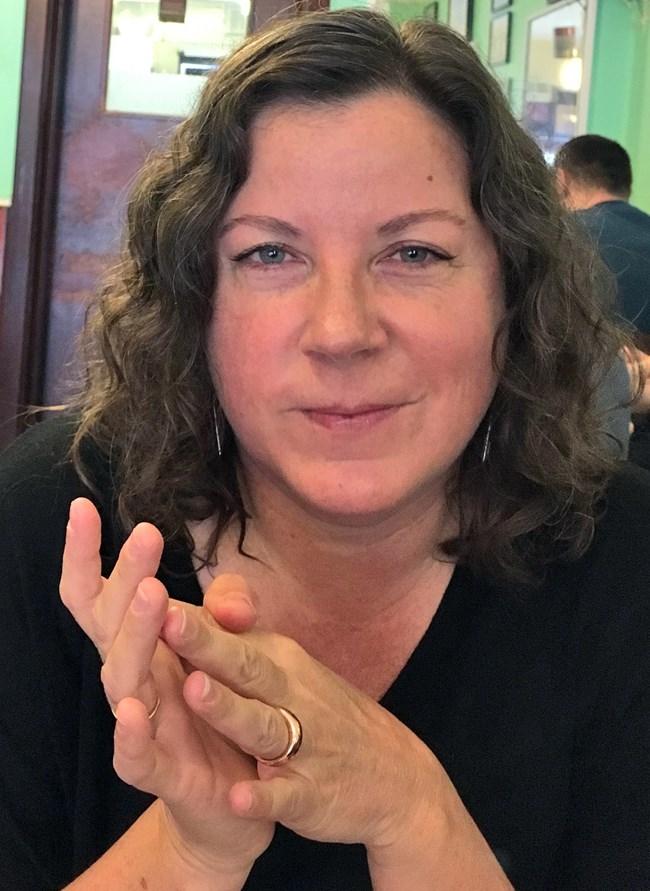
Who is your favorite artist?
“I'm totally obsessed with Benedict Cumberbatch. It's because I really love the Sherlock show. And Sherlock Holmes books and stuff. And actually, my interns all know this. So we named our pools for our red-legged frog stuff. We have a Cumberbatch pool. A Benedict pool. Anyway, there's a lot of Benedict Cumberbatch going on.”
Learn More
Contact
Selected Publications
Bucciarelli GM, Clark MA, Delaney KS. et al. 2020. Amphibian responses in the aftermath of extreme climate events. Scientific Reports 10, 3409.
Delaney KS, Riley SPD, Fisher RN. 2010. A Rapid, Strong, and Convergent Genetic Response to Urban Habitat Fragmentation in Four Divergent and Widespread Vertebrates. PLoS ONE 5(9): e12767.
Delaney KS and Wayne RK. 2005. Adaptive Units for Conservation: Population Distinction and Historic Extinctions in the Island Scrub‐Jay. Conservation Biology, 19: 523-533.
Gibson RM, Pires D, Delaney KS, and Wayne, RK. 2005. Microsatellite DNA analysis shows that greater sage grouse leks are not kin groups. Molecular Ecology, 14: 4453-4459.
Related Links
Mediterranean Coast Inventory & Monitoring Network
- Aquatic Amphibian & Invasive Species Monitoring
- Terrestrial Amphibian & Reptile Monitoring
- Stream Condition Monitoring
Santa Monica Mountains National Recreation Area
Interview by Jessica Weinberg McClosky and Keith Lombardo, Southern California Research Learning Center.
